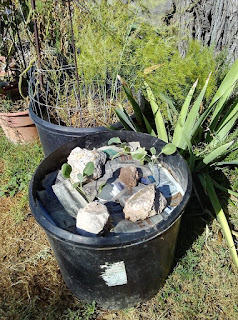Just one of the articles I read was found on The Herb Cottage website. Since I successfully grew Cotton from seed, I thought, Why not!
But it’s never been forgotten.
My heart soared with the thought of flowers and wildflowers mixed with herbs in the garden. Albeit a garden far away from the house. That’s okay. Once the dead rosemary is cut away, I will be able to see it from the house.
I ordered these seeds from Botanical Interest. Seeds are coming! Any day!
I'm trying to decide to sow the seeds types separately, or mix all together and see what happens! From the photos I've seen I like both looks. Like the old English Garden style.Blue and Breezy Flax Seeds
Bring Home the Butterflies Flower Mix Seeds
Lavender Hyssop Seeds
Pixie Delight Lupine Seeds
American Legion Corn Poppy Seeds
Black-Eyed Susan Seeds
Because I need to build the soil in the veggie garden I also bought some Common Buckwheat Cover Crop Seeds! The write up about it peaked my interest:
Buckwheat has been used for centuries to improve soil health and smother common weeds. It grows better than most cover crops in poor soils and is better at retrieving phosphorus, a macro-nutrient that contributes to later crops' root, flower, and fruit growth. Buckwheat not only grows quickly, it also breaks down quickly in the soil, allowing for planting in the same area just 3 to 4 weeks after incorporating it into the soil. It can also be used as mulch on the soil surface. If allowed, white flowers will form about 35 days after sowing and are loved by beneficial insects and even make pretty filler in bouquets! Turn buckwheat into soil before seeds begin forming. Because buckwheat is cold sensitive, it is grown spring to fall frost, except in mild climates that may be warm enough to grow into fall and possibly winter.Seeds are wonderful hope for the future.















